Thermo Fisher Scientific TSG Series Manuel utilisateur
- Taper
- Manuel utilisateur

General Purpose and
Chromatography Refrigerators
TSG Series
Installation and Operation
329137H01 • Revision F • 01/19/2022

IMPORTANT Read this instruction manual. Failure to follow the instructions in this manual can result in
damage to the unit, injury to operating personnel, and poor equipment performance.
CAUTION All internal adjustments and maintenance must be performed by qualified service personnel.
Material in this manual is for informational purposes only. The contents and the product it describes are
subject to change without notice. Thermo Fisher Scientific makes no representations or warranties with
respect to this manual. In no event shall Thermo be held liable for any damages, direct or incidental, arising
from or related to the use of this manual.
© 2022 Thermo Fisher Scientific Inc. All rights reserved.
For your future reference and when contacting the factory, please have the following information readily
available. It can be found on the dataplate attached to your unit.
Model Number:
Serial Number:
The following information, if available, is helpful for contacting the factory.
Date Purchased:
Purchase order number:
Source of Purchase:
(manufacturer or specific agent/rep organization)

Contents
Model ......................................................................... 1
Safety Precautions.................................................... 2
Unpacking ................................................................. 4
Packing List............................................................... 4
General Recommendations ..................................... 5
Temperature Monitoring ...................................... 5
Intended Use ......................................................... 5
Initial Loading ........................................................ 5
Operating Standards ................................................ 6
Unit Specifications................................................ 6
Installation................................................................. 8
Location ................................................................. 8
Leveling the Unit ................................................... 8
Castor Installing and Pallet
Removal Instructions............................................ 8
Chromatography Refrigerators ........................... 10
Wiring ..................................................................... 11
Shelves................................................................... 13
Installation Instructions........................................ 13
Door Operation...................................................... 13
Remote Alarm........................................................ 13
Final Checks .......................................................... 14

Startup ....................................................................... 15
Initial Startup ......................................................... 15
Chromatography Refrigerators ........................... 15
Product Loading and Unloading Guidelines....... 15
Operation................................................................... 16
Control Panel......................................................... 16
Temperature Set point.......................................... 17
Alarms .................................................................... 17
Controller Parameter Settings............................. 19
Maintenance.............................................................. 23
Cleaning the Cabinet Interior............................... 23
Cleaning the Unit
(Chromatography Refrigerators) ......................... 23
Cleaning the Condenser....................................... 23
Automatic Defrost................................................. 23
Gasket Maintenance............................................. 23
Alarm Battery Maintenance ................................. 24
Preparation for Storage........................................ 24
Cleaning the Unit
(Chromatography Refrigerators) ......................... 24
Replacing Sensor
(Chromatography Refrigerators) ......................... 24
Sensor Maintenance
(Chromatography Refrigerators) ......................... 24
Troubleshooting........................................................ 25
End of Life Care ........................................................ 26
Warranty .................................................................... 27

Regulatory Compliance............................................ 28
Product Safety....................................................... 28
Hydrocarbon Refrigerants.................................... 28
Electromagnetic Compatibility ............................ 28
Canadian ISED IC Notice...................................... 28
Energy Efficiency .................................................. 29
Additional Regulations and Markings ................. 29
Contact Information ................................................. 31

General Purpose and Chromatography Refrigerators Model | 1
Model
The table below shows the units covered in this operation and
installation manual by model number.
The annotation of model numbers is given in the following
table:
Table 1. Applicable Models
Refrigerators
TSG12RPGA TSG45RSLA
TSG25RPGA TSG45CSLA
TSG25RPSA TSG49RPGA
TSG25RSGA TSG49CPGA
TSG25RSSA TSG49RPSA
TSG30RPGA TSG49RSGA
TSG30CPGA TSG49CSGA
TSG30RPSA TSG49RSSA
TSG30RSGA TSG72RPGA
TSG30CSGA TSG72CPGA
TSG30RSSA TSG72RSGA
TSG45RPLA TSG72CSGA
TSG45CPLA
Table 2. Model Specification
Series TSG (Thermo Scientific)
Size (cu.ft) 12, 25, 30, 45, 49, 72
Type R = Refrigerator
C = Chromatography
Exterior P = Painted
S = Stainless
Door Type S = Solid
G = glass
L = Sliding glass
Voltage A = 115 V / 60 Hz

2 | Safety Precautions General Purpose and Chromatography Refrigerators
Safety Precautions
In this manual, the following symbols and conventions are
used .
Below are important safety precautions that apply to this
product.
WARNING: This symbol when used alone
indicates important operating instructions which
reduce the risk of injury or poor performance of
the unit.
WARNING: This symbol indicates potentially
hazardous situations which, if not avoided, could
result in serious injury or death.
WARNING: This symbol indicates situations
where dangerous voltages exist and potential for
electrical shock is present.
WARNING: This symbol indicates potentially
hazardous situations, which if not avoided could
result in fire.
CAUTION: This symbol, in the context of a
CAUTION, indicates a potentially hazardous
situation which if not avoided could result in
minor to moderate injury or damage to the
equipment. This indicates a situation which may
result in property damage.
CAUTION: This symbol indicates surfaces which
may become hot during use and may cause a
burn if touched with unprotected body parts.
WARNING: Before installing, using or
maintaining this product, please be sure to read
the manual and product warning labels carefully.
Failure to follow these instructions may cause the
product to malfunction, which could result in
injury or damage.
CAUTION: This symbol indicates possible pinch
points which may cause personal injury.
WARNING: The snowflake symbol indicates low
temperatures and risk of frost bite. Do not touch
bare metal or samples with unprotected body
parts.
CAUTION: Use this product only in the way
described in the product literature and in this
manual. Before using it, verify that this product is
suitable for its intended use. If the equipment is
used in a manner not specified by the
manufacturer, the protection provided by the
equipment may be impaired.
CAUTION: Do not modify system components,
especially the controller. Use OEM exact
replacement equipment or parts. Before use,
confirm that the product has not been altered in
any way.
WARNING: Your unit must be properly grounded
in conformity with national and local electrical
codes. Do not connect the unit to overloaded
power sources.
WARNING: Disconnect the unit from all power
sources before cleaning, troubleshooting, or
performing other maintenance on the product or
its controls.
WARNING: This unit is not for storage of
flammable materials.
WARNING: Units are charged with hydrocarbon
refrigerant (R290). Only qualified service
personnel should service this unit.
WARNING: Unauthorized repair of your unit will
invalidate your warranty. Contact Technical
Service at 1-866-984-3766 for additional
information.
DANGER: Risk of fire or explosion. Flammable
refrigerant used to be repaired only by trained
service personnel. Do not puncture refrigerant
tubing.
WARNING: No equipment that uses an open
flame should be placed inside the refrigerator.
This will harm the unit, hamper functionality and
compromise your safety.
CAUTION: Do not use any battery powered or
externally-powered equipment in the refrigerator.

General Purpose and Chromatography Refrigerators Safety Precautions | 3
Below are additional safety precautions that apply to
chromatography refrigerator models:
CAUTION: Equipment should only be powered
using the internal outlet. In case of a leak the
safety circuit will remove power to the outlet in
the unit, but shall have no control over equipment
power via battery or externally. Do not use
instrumentation or equipment that incorporates
potential ignition sources, e.g. open contact
switching, brushed DC and AC motors, etc.
CAUTION: The chromatography safety circuit
has slots / holes at the bottom of the plug panel
for enabling air to the safety sensor. Do not block
the Safety Circuit ventilation holes as this will
diminish and defeat the Safety Circuit.
WARNING: Do not store or use uncapped
reagents, vessels and bottles inside the
chromatography equipment. This may diminish
functionality of the safety circuit.

4 | Unpacking General Purpose and Chromatography Refrigerators
Unpacking
At delivery, examine the exterior for physical damage while
the carrier’s representative is present. If exterior damage is
present, carefully unpack and inspect the unit and all
accessories for damage.
If there is no exterior damage, unpack and inspect the
equipment within five days of delivery. If you find any damage,
keep the packing materials and immediately report the
damage to the carrier.
Do not return goods to the manufacturer without
written authorization.
When submitting a claim for shipping damage, request that
the carrier inspect the shipping container and equipment.
Packing List
Along with the unit, following things will be packed:
• Installation and Operation manual is placed in the white
envelope.
• Door Lock Key and Power Key Switch is wire tied to the
pilaster on the upper top front.
• Small bag with shelving clips
• Shelves
• Half shelves (with chromatography refrigerators)
• Power cord
• Casters (Applicable for 12, 25, 30cf models only)
• Wrench (Applicable for 12, 25, 30cf models only)

General Purpose and Chromatography Refrigerators General Recommendations | 5
General Recommendations
This section includes some general recommendations for
your unit.
Temperature Monitoring
Intended Use
The refrigerators described in this manual are lab-grade,
general purpose units intended to store non-critical samples
at operating temperatures between 2°C to 10°C.
These units are not registered as medical devices or by a
medical device regulatory body (e.g. FDA): that is, they have
not been evaluated for the storage of samples for diagnostic
use or for samples to be re-introduced to the body.
This unit is not intended for use in classified hazardous
locations, nor to be used for the storage of flammable or
corrosive inventory.
This refrigerators are not suitable for outdoor location.
Initial Loading
Allow the unit to operate at the desired temperature for a
minimum of 12 hours before loading.
Load the unit one shelf at a time, starting from bottom to top
shelf. After loading each shelf, allow the unit to recover to the
desired set point before loading the next shelf. Repeat this
process until the unit is fully loaded. Please refer to the section
Shelves for shelf load ratings.
IMPORTANT NOTE: We recommend the use of
a redundant and independent temperature
monitoring system so that the unit can be
monitored continuously for performance
commensurate with the value of product stored.
CAUTION: Storage of unsealed corrosive
substances may cause the interior of the unit to
corrode.
CAUTION: Failure to follow these procedures or
overloading the unit may cause undue stress on
the compressors or jeopardize user product
safety.

6 | Operating Standards General Purpose and Chromatography Refrigerators
Operating Standards
The units described in this manual are classified for use as
stationary equipment in a Pollution Degree 2 and Over voltage
Category II environment.
These units are designed to operate under the following
environmental conditions:
• Indoor use
• Altitude up to 2000 m (6512 feet)
• Maximum relative humidity 60% for temperatures from
15°C to 32°C (59°F to 90°F)
• Main supply voltage fluctuations not to drop or exceed by
10% of the nominal voltage
• Do not connect the unit to a GFCI (Ground Fault Circuit
Interrupter) protected outlet as it may be subject to
nuisance tripping
• Do not run this unit off the extension cords
Unit Specifications
The data label is located on the left side on top towards front
of the unit.
The specifications of refrigerator like voltage, required wall
breaker amperage and power plug are same for all the units.
Voltage = 115 V / 60 Hz
Amps - Refer to data label for unit rating. The power supply
cord plug indicates the wall circuit breaker rating at 15A.
Chromatography Power Plug = NEMA 5-15P
General Purpose Refrigerator Power Plug = NEMA 5-15P
This plug must be plugged into / supplied with its own
individual branch circuit.
Other specifications are listed in the table below.
CAUTION: Chromatography units are supplied
with two separate power cords. Be careful to
unplug both during movement, testing or repair
of the product.
Table 3. Unit Specifications
Unit Size
(Cu.ft.)
Exterior Door
Type
No.of
Shelves
Exterior Dimensions
(H x W x D)
TSG12RPGA 12 Painted Glass 4 1925.9 x 628.6 x 635.0 mm
(75.82 x 24.75 x 25.00 in)
TSG25RPGA 25 Painted Glass 4 2057.1 x 704.8 x 812.8 mm
(81.00 x 27.75 x 32.00 in)
TSG25RPSA 25 Painted Solid 4 2057.1 x 704.8 x 812.8 mm
(81.00 x 27.75 x 32.00 in)
TSG25RSGA 25 Stainless
Steel Glass 4 2057.1 x 704.8 x 812.8 mm
(81.00 x 27.75 x 32.00 in)
TSG25RSSA 25 Stainless
Steel Solid 4 2057.1 x 704.8 x 812.8 mm
(81.00 x 27.75 x 32.00 in)
TSG30RPGA 30 Painted Glass 4 2057.1 x 781.0 x 812.8 mm
(81.00 x 30.75 x 32.00 in)
TSG30CPGA 30 Painted Glass 4 + 3 Half
Shelves
2057.1 x 781.0 x 812.8 mm
(81.00 x 30.75 x 32.00 in)
TSG30RPSA 30 Painted Solid 4 2057.1 x 781.0 x 812.8 mm
(81.00 x 30.75 x 32.00 in)

General Purpose and Chromatography Refrigerators Operating Standards | 7
TSG30RSGA 30 Stainless
Steel Glass 4 2057.1 x 781.0 x 812.8 mm
(81.00 x 30.75 x 32.00 in)
TSG30CSGA 30 Stainless
Steel Glass 4 + 3 Half
Shelves
2057.1 x 781.0 x 812.8 mm
(81.00 x 30.75 x 32.00 in)
TSG30RSSA 30 Stainless
Steel Solid 4 2057.1 x 781.0 x 812.8 mm
(81.00 x 30.75 x 32.00 in)
TSG45RPLA 45 Painted Sliding
Glass 82057.1 x 1338.6 x 812.8 mm
(81.0 x 52.7 x 32.0 in)
TSG45CPLA 45 Painted Sliding
Glass
8 + 2 Half
Shelves
2057.1 x 1338.6 x 812.8 mm
(81.0 x 52.7 x 32.0 in)
TSG45RSLA 45 Stainless
Steel
Sliding
Glass 82057.1 x 1338.6 x 812.8 mm
(81.0 x 52.7 x 32.0 in)
TSG45CSLA 45 Stainless
Steel
Sliding
Glass
8 + 2 Half
Shelves
2057.1 x 1338.6 x 812.8 mm
(81.0 x 52.7 x 32.0 in)
TSG49RPGA 49 Painted Glass 8 2057.1 x 1338.6 x 812.8 mm
(81.0 x 52.7 x 32.0 in)
TSG49CPGA 49 Painted Glass 8 + 2 Half
Shelves
2057.1 x 1338.6 x 812.8 mm
(81.0 x 52.7 x 32.0 in)
TSG49RPSA 49 Painted Solid 8 2057.1 x 1338.6 x 812.8 mm
(81.0 x 52.7 x 32.0 in)
TSG49RSGA 49 Stainless
Steel Glass 8 2057.1 x 1338.6 x 812.8 mm
(81.0 x 52.7 x 32.0 in)
TSG49CSGA 49 Stainless
Steel Glass 8 + 2 Half
Shelves
2057.1 x 1338.6 x 812.8 mm
(81.0 x 52.7 x 32.0 in)
TSG49RSSA 49 Stainless
Steel Solid 8 2057.1 x 1338.6 x 812.8 mm
(81.0 x 52.7 x 32.0 in)
TSG72RPGA 72 Painted Glass 12 2057.1 x 1924.0 x 812.8 mm
(81.00 x 75.75 x 32.00 in)
TSG72CPGA 72 Painted Glass 12+ 2 Half
Shelves
2057.1 x 1924.0 x 812.8 mm
(81.00 x 75.75 x 32.00 in)
TSG72RSGA 72 Stainless
Steel Glass 12 2057.1 x 1924.0 x 812.8 mm
(81.00 x 75.75 x 32.00 in)
TSG72CSGA 72 Stainless
Steel Glass 12+ 2 Half
Shelves
2057.1 x 1924.0 x 812.8 mm
(81.00 x 75.75 x 32.00 in)
Table 3. Unit Specifications
Unit Size
(Cu.ft.)
Exterior Door
Type
No.of
Shelves
Exterior Dimensions
(H x W x D)

8 | Installation General Purpose and Chromatography Refrigerators
Installation
Location
Install the unit on a level area free from vibration.Refer to data
label on unit for more details about the installation clearance.
Do not position the equipment in direct sunlight or near
heating diffusers, radiators or other sources of heat.
Note: Do not move the unit in fully loaded condition.
Leveling the Unit
The refrigerator must be level in order to provide adequate
condensation drainage as well as proper door alignment and
operation. The refrigerator should be in its final operating
location and set so that it is firmly positioned on the floor.
Level the cabinet front to rear and side-to-side using the
corner leveling screws. The front leveling screws are
accessed by removing the base grill, as described below:
1. Remove the lower grill attachment screws
2. Grasp the grill with both hands
3. Lift the grill approximately 1/2"
4. Pull grill away from the refrigerator
Castor Installing and
Pallet Removal
Instructions
Note: Casters available for 12, 25, and 30 cu. ft. units;
leveling feet only on 45, 49, and 72 cu. ft. units
Without Forklift
Required Tools:
Phillips head screwdriver, 7/16", 5/16"-18" wrenches, wrench
supplied with unit. Always use local PPE protocols and where
needed the appropriate number of people to stay safe.
All the units are shipped with factory installed feet with rolling
casters supplied inside of the unit. The following instructions
demonstrate how to remove the cabinet from its shipping
base (pallet) and install the casters without use of a forklift.
Note: The unit should be unpacked near the desired final
location.
1. Remove the packaging and kick plates from unit.
Remove additional packaging to access the interior of the
cabinet. Be sure to keep one cardboard corner for
subsequent step.
2. Using a screwdriver, remove the screws holding on the
front grill. Lift grill upwards and pull away from unit to
remove. Set aside.
3. Remove bolts (4) holding the unit to the pallet using the
7/16” wrench.
Note: From this step onwards, use local PPE protocols and
where needed the appropriate number of people to stay safe.
WARNING: Do not exceed the electrical rating
printed on the data plate located on the upper left
side of the unit.
CAUTION: Avoid damage to the refrigerant
tubing which may cause a refrigerant leak while
handling, moving, and operating this unit.

General Purpose and Chromatography Refrigerators Installation | 9
4. Use local PPE protocols and the appropriate number of
people to gently slide the unit towards the side edge of
the pallet. Slide the unit so that there are approximately 3
inches of overhang to allow the removal of the factory
installed feet and installation of the casters.
5. Use local PPE protocols and the appropriate number of
people where needed to ensure additional unit support is
provided on the side of the pallet. Remove all the 4
factory installed feet (If necessary use the 3/8" wrench to
loosen). Install 2 casters on overhang edge and tighten
using caster wrench supplied.
Note: Some casters lock and others do not. It is
recommended to install the locking casters on the front of the
unit.
6. While supporting the unit, carefully slide the unit until the
casters reach the ground. Gently slide the back edge off
of the pallet approximately 3 inches to allow for
installation of the back caster. Use local PPE protocols
and the appropriate number of people to continue
supporting the unit at the floor end and install 1 caster on
the back of the unit. Tighten using caster wrench
supplied.
7. Gently rotate unit to install the last caster.
With local PPE protocols and the appropriate number of
people continue supporting the unit at the floor end,
install 1 caster on the front of unit. Tighten using caster
wrench supplied.
8. Take a cardboard packaging corner, fold in half, and
place under the pallet/unit with the fold away from the
pallet. Gently position unit parallel with the pallet using the
edge of the unit to support the pallet. Once in position,
gently roll the unit off of the pallet.
CAUTION: Appropriate number of people are
always required to move the unit. Never move or
adjust unit when some one is working on the unit
(i.e. adjusting casters).
DANGER: Do not tip unit more than 10 degrees
during caster installation. Overturning may result
in serious injury or death.

10 | Installation General Purpose and Chromatography Refrigerators
With Forklift
Required Tools: Phillips Head Screwdriver, 7/16” and 3/8”
Wrenches. Always use local PPE protocols and where
needed the appropriate number of people to stay safe.
The following instructions demonstrate how to remove the
cabinet from its shipping base (pallet) and install the casters or
lower legs using a fork truck.
1. Remove the screws, bolts and caster by following the
instructions given in section Without Forklift
Note: Always use caution when lifting unit with forklift to
ensure not to damage or drop unit.
2. Carefully position forks to lift unit from rear. Ensure unit is
fully positioned on fork truck prior to raising the forks.
3. Raise the unit approximately six inches to allow access to
the feet and casters. Use local PPE protocols and the
appropriate number of people to stand at the front of the
unit and provide additional support to the unit. If feet are
desired, lower all 4 factory installed feet (using the 3/8”
wrench to loosen if necessary). If rolling casters are
desired, remove the feet and install the 4 casters and
tighten using caster wrench supplied.
Note: Some casters lock and others do not. It is advised to
install the locking casters on the front of the unit.
4. Remove pallet from below the unit and gently lower unit
in desired location.
Chromatography
Refrigerators
The chromatography refrigerator is equipped with a safety
circuit. In the event the safety circuit is tripped (the safety
sensor senses a flammable gas), the power to the internal
outlet will be discontinued and the user will need to manually
reset the safety circuit assembly using the reset switch at the
right side of header panel before power is restored. To do
this, toggle the switch located on the top right side of the
header panel beside the remote alarm contacts. There will be
a power delay to the outlet for approximately 4 minutes where
the red LED will be illuminated.
When power is available at the outlet, the red LED will turn off
and the green LED will illuminate.
If the circuit trips from RED back to GREEN repeatedly or
never turns GREEN, please contact Customer Service.
Flammable materials should not be stored in the refrigerator.
Lights
The GFCI outlet assembly is located inside the unit back in the
center.
The outlet assembly has two LEDs:
• RED (on the top) - When the red LED is ON, it indicates
there is no power to the AC outlet inside the unit.
• GREEN (on the bottom) - When the green LED is ON, it
indicates there is power to the AC outlet inside the unit.
Switches
The Chromatography refrigerators has a reset switch on the
right side of the header panel, above remote alarm contacts.
• Chromatography Manual Reset: This is used to manually
reset the safety circuit in the AC receptacle assembly
after the LED turns RED from GREEN due to a safety trip
event which disengages power to outlet inside the
refrigerator. It is present on the right side top front corner
next to the remote alarm contacts.

General Purpose and Chromatography Refrigerators Installation | 11
Wiring
The wiring diagram for the units is shown in Figure 1.
CAUTION: Connect the equipment to the
correct power source. Incorrect voltage can
result in severe damage to the equipment.
CAUTION: For personal safety and trouble-free
operation, this unit must be properly grounded
while in use. Failure to ground the equipment
may cause personal injury or damage to the
equipment. Always conform to the National
Electrical Code and local codes. Do not connect
the unit to overloaded power lines.
CAUTION: Always connect the unit to a
dedicated (separate) circuit. Each unit is
equipped with a service cord and plug designed
to connect it to a power outlet which delivers the
correct voltage. Supply voltage must be within
±10% of the unit rated voltage. If cord becomes
damaged, replace with a properly rated power
supply cord. Power Cord Specifications: 3-G 12
AWG, NEMA 5-15 P, 15A / 125V.
CAUTION: Never cut the grounding prong from
the service cord plug. If the prong is removed, the
warranty is invalidated.
CAUTION: Disconnect the power cord in case of
emergency.

12 | Installation General Purpose and Chromatography Refrigerators
Figure 1. Wiring Diagram
6&
:+,7(
%/$&.
%52:1
1'(9$3)$121
/$5*(581,7621/<
(9$3)$1
:+,7(
(/,:(//&21752//(5'(7$,/
&2035(6625
5(027($/$50
/,*+7
1(875$/
/,1(92/7$*(
&$%,1(77(03
(9$325$7257(03
5&581&$3$&,725
6&67$57&$3$&,725
2/29(5/2$'
(/,:(//&21752//(57(50,1$/
&211(&7,2132,17
&5&21752/5(/$<
/(*(1'
6((&21752//(5'(7$,/
5(027($/$50&217$&76
12&201&
5(/$<
:+,7(
&2035(6625'(7$,/93+
&855(175(/$<
6
0
&21'(16(5)$1
&
6
5
&203
2/
/$03
/('/$03
32:(5
6833/<
6((&21752//(5'(7$,/
6((&21752//(5'(7$,/
6((&21752//(5'(7$,/
-
-
-
52&.(5
6:,7&+
-
$&287/(7
5(/$<
'&,1
-
+&6(1625
%2$5'
*5((1
/('
5('
/('
32:(56833/<
6,*1$/
&21',7,21,1*
%2$5'
.(<6:
1&
&20
&2,/
5(/$<
)250&
.(<6:
9
%$77(5<
%8==(5
/('
%/$&.
%/8(
<(//2:
%/$&. %/$&.
%/$&.
5('
%52:1
%/$&.
%52:1
:+,7(
%/8(
%/8(
%52:1
%/8(
%52:1
%/$&.
%/$&.
%/$&.
%/$&.
%52:1
%/8(
%/$&.
*5((1
:+,7(
*5$<
%/$&.
5('
5('
&+520$72*5$3+<5()5,*(5$725621/<
%/$&.
:+,7(
%52:1
%/8(:+,7(
%52:1
%/$&.
*5((1
<(//2:
:+,7(
5('
:+,7(
*5((1
*5((1
*5((1
5('
%/$&.
*5((1
<(//2:
%/8(
:+,7(
(0,
),/7(5
:,5,1*',$*5$0)255()5,*(5$
'2256:,7&+
127(6
9(5,),&$7,212)$//',0(16,2
63(&6127(65(48,5(')52
6833/,(5$77+(7,0(2)),567
$57,&/(68%0,66,217+,66+$
,1&/8'(0($685(0(176)520
),567$57,&/(6$03/(6
6<0%2/6'(6,*1$7,216$1'
*(1(5$/'5$:,1*0(7+2'6
(1*:,
(037<
(037<
5(9
'&2
'$7(
'(6&5,37,
5(9,6,216
'
83'$7('&21752//
:$6'$1)266$1'5(
$7/5(*,21,1
&
83'$7(':,5,1*$7+
%
83'$7(':,5,1*',$
$''(''2256:,7&+
)255()5,*(5$7
)5((=(56,16
$
,1,7,$/5(/(
7+(,1)250$7,21&21
7+(35235,(7$5<'$
),6+(56&,(17,),&
5(352'8&('25',6&
25,13$57:,7+287
&216(172)7+(502)
'21276&$/(7+
$,.(152$'
$6+(9,//(1&
7,7/(
6,=(
6+((72)
':*12
UG$1*/(
352-(&7,21
'
:,5,1*',$*5$076*6(5,(
$57,&/(250$7(5,$/0867&203/<:,7+
7+((19,5210(17$/&203/,$1&(
63(&,),&$7,217)6'5$:,1*6

General Purpose and Chromatography Refrigerators Installation | 13
Shelves
All the units come standard with wire shelves. Each unit has
different number of shelves. Refer to Table 3 for more
information.
Maximum shelf capacity is 45 kg (100 lbs) for full shelves and
22.5 kg (50 lbs) for half shelves.
For safety in shipping, the shelves are packaged and secured
inside the cabinet. Insert the shelf support hangers (included
with the manual inside the unit) into the built-in shelf supports
(located on the inside walls of the cabinet interior) at the
desired locations.
Figure 2. Shelf Arrangement
Figure 3. Shelf Clip
Installation Instructions
1. Determine proper location for shelves clips, the reference
number on the pilaster can serve as a guide to ensure all
clips are properly located.
2. Insert top of the clip into the desired hole of the pilaster
the retaining tab should be facing upwards.
3. Rotate the clip downwards and insert the bottom tab into
the appropriate hole, the clip may be squeezes slightly
during installation.
4. Install shelves onto clips with the product retention bar
facing upwards, be careful not to is lodge clips during
shelve installation.
5. Prior to loading the shelf, ensure that the shelf is resting
on each of 4 clips and the clips are installed.
Door Operation
The swinging door units are designed to stay open if opened
90 degrees or more. The door spring tension cannot be
adjusted.
The Sliding doors can be opened completely towards left or
right. If the self-closing door does not work properly, make
sure the unit is leveled properly
Door Seal
Remote Alarm
All units have factory-installed remote alarm contacts that can
be used for remote alarm systems. The maximum distance
between a unit and a remote alarm depends on the wire
gauge used. Refer to Table 4 below:
The Remote alarm contacts are located on the right side of
the header panel. The three terminals are: COMMON, OPEN
ON FAIL (Normally Closed) and CLOSE ON FAIL (Normally
Open).
WARNING: Do not to move this unit while
loaded
CAUTION: Improper shelf clip installation may
cause shelf and/or product damage to the unit.
CAUTION: Do not overload the shelves, the unit
is designed to utilize all shelves that are supplied
in an equally spaced manner.
CAUTION: Door seal integrity is critical for unit
performance. A loose fitting gasket allows moist
air to be drawn into the cabinet, resulting in
quicker frost buildup on the cabinet walls, longer
running time, poor temperature maintenance and
increased operation cost.

14 | Installation General Purpose and Chromatography Refrigerators
To install the remote alarm, make the following connections:
1. Connect the COMMON terminal on the cabinet switch to
the COMMON wire on the alarm.
2. To get an alarm when the switch contacts open, connect
the OPEN ON FAIL terminal on the cabinet to the OPEN
ON FAIL wire on the alarm.
3. To get an alarm when the switch contacts close, connect
the CLOSE ON FAIL terminal on the cabinet to the
CLOSE ON FAIL wire on the alarm. The COMMON and
CLOSE ON FAIL wires must be tied together in this
application
4. Plug the alarm system service cord into an electrical
outlet.
5. The contacts will trip in the event of high temperature
alarm or low temperature alarm.
Final Checks
Before start up, be sure to complete the following steps:
1. Make sure that the unit is free of all wood or cardboard
shipping materials, both inside and outside.
2. Check the positions of the shelves. If you want to adjust
the positions.
3. Verify that the unit is connected to a dedicated circuit.
Table 4. Wire Gauge and Distance to Remote
Alarm
Wire
Gauge
Total Wire
Length (feet)
Distance to Alarm 1/2
Wire Length (feet)
20 530 265
18 840 420
16 1330 665
14 2120 1060
12 3370 1685

General Purpose and Chromatography Refrigerators Startup | 15
Startup
Initial Startup
To start up the unit, complete the following steps:
1. Connect the AC main power cord. The evaporator fans
start when the power cord is plugged in.
2. Insert the silver colored key in the switch and turn to the
Power On position.
3. Allow the unit to reach operating temperature before
loading it with any product. To stabilize the temperature
profile, a 24-hour waiting period is recommended.
4. If you desire to enable the power failure alarm, turn the
three position key switch one turn further clockwise to
the All Alarm On position.
5. If you have a remote alarm, hook it up at this point (refer
to section Remote Alarm).
6. If desired, lock the cabinet door using the silver colored
key. Place duplicate key copies in a safe place.
All controls should now be fully operational, the alarm active (if
enabled) and all visual indicators active.
Chromatography
Refrigerators
1. Connect the AC main power cord.
2. Connect the GFCI AC power cord.
3. Make sure the reset switch is in ON position.
4. Insert the silver colored key in the switch and turn to the
Power On position. The display will show the actual
cabinet temperature.
Note: The Chromatography refrigerator is shipped with the
manual reset switch at the top right side front of the header
panel above the remote alarm contacts (refer to section
Switches) as ON. The Manual reset switch should always be
in ON position.
5. The red LED on the chromatography safety circuit turns
ON.
6. After a power delay of 4 minutes the red LED on the
chromatography safety circuit turns Off and the green
LED on the chromatography safety circuit turns ON.
Note: During initial power-up, the GFCI outlet will not be
powered until after an approximate 4 minute delay.
Operating equipment inside the refrigerator may shift the
temperature profile in the unit. Monitor the refrigerator as
needed for any such shift.
Product Loading and
Unloading Guidelines
When loading your unit, take care to observe the following
guidelines:
• Distribute the load as evenly as possible. Temperature
uniformity depends on air circulation, which could be
impeded if the internal storage components are overfilled,
particularly at the top of the cabinet.
• For critical applications, be sure that the alarm systems
are working and active before you load any product.
• Ensure clearance between the top of the cargo and the
bottom of the internal storage components. Lack of
clearance may affect unit performance or impede
operation of the storage component.
La page charge ...
La page charge ...
La page charge ...
La page charge ...
La page charge ...
La page charge ...
La page charge ...
La page charge ...
La page charge ...
La page charge ...
La page charge ...
La page charge ...
La page charge ...
La page charge ...
La page charge ...
La page charge ...
La page charge ...
La page charge ...
La page charge ...
La page charge ...
La page charge ...
La page charge ...
La page charge ...
La page charge ...
La page charge ...
La page charge ...
La page charge ...
La page charge ...
La page charge ...
La page charge ...
La page charge ...
La page charge ...
La page charge ...
La page charge ...
La page charge ...
La page charge ...
La page charge ...
La page charge ...
La page charge ...
La page charge ...
La page charge ...
La page charge ...
La page charge ...
La page charge ...
La page charge ...
La page charge ...
La page charge ...
La page charge ...
La page charge ...
La page charge ...
La page charge ...
La page charge ...
-
 1
1
-
 2
2
-
 3
3
-
 4
4
-
 5
5
-
 6
6
-
 7
7
-
 8
8
-
 9
9
-
 10
10
-
 11
11
-
 12
12
-
 13
13
-
 14
14
-
 15
15
-
 16
16
-
 17
17
-
 18
18
-
 19
19
-
 20
20
-
 21
21
-
 22
22
-
 23
23
-
 24
24
-
 25
25
-
 26
26
-
 27
27
-
 28
28
-
 29
29
-
 30
30
-
 31
31
-
 32
32
-
 33
33
-
 34
34
-
 35
35
-
 36
36
-
 37
37
-
 38
38
-
 39
39
-
 40
40
-
 41
41
-
 42
42
-
 43
43
-
 44
44
-
 45
45
-
 46
46
-
 47
47
-
 48
48
-
 49
49
-
 50
50
-
 51
51
-
 52
52
-
 53
53
-
 54
54
-
 55
55
-
 56
56
-
 57
57
-
 58
58
-
 59
59
-
 60
60
-
 61
61
-
 62
62
-
 63
63
-
 64
64
-
 65
65
-
 66
66
-
 67
67
-
 68
68
-
 69
69
-
 70
70
-
 71
71
-
 72
72
Thermo Fisher Scientific TSG Series Manuel utilisateur
- Taper
- Manuel utilisateur
dans d''autres langues
Documents connexes
-
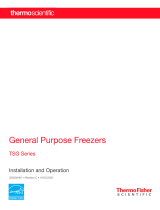 Thermo Fisher Scientific TSG Series Manuel utilisateur
Thermo Fisher Scientific TSG Series Manuel utilisateur
-
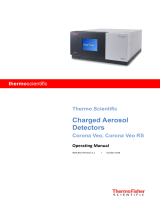 Thermo Fisher Scientific Corona Veo, Corona Veo RS Mode d'emploi
Thermo Fisher Scientific Corona Veo, Corona Veo RS Mode d'emploi
-
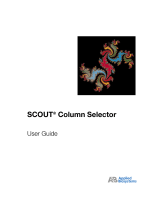 Thermo Fisher Scientific SCOUT® Column Selector Mode d'emploi
Thermo Fisher Scientific SCOUT® Column Selector Mode d'emploi
-
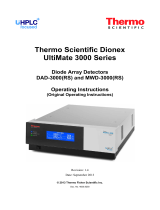 Thermo Fisher Scientific Dionex UltiMate 3000 Series Mode d'emploi
Thermo Fisher Scientific Dionex UltiMate 3000 Series Mode d'emploi
-
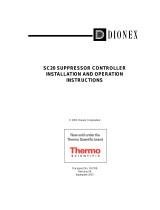 Thermo Fisher Scientific SC20 Suppressor Controller Mode d'emploi
Thermo Fisher Scientific SC20 Suppressor Controller Mode d'emploi
-
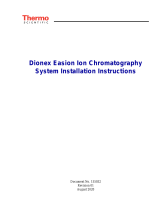 Thermo Fisher Scientific Dionex Easion Ion Chromatography System Guide d'installation
Thermo Fisher Scientific Dionex Easion Ion Chromatography System Guide d'installation
-
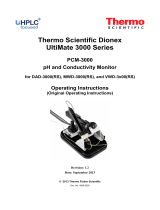 Thermo Fisher Scientific Dionex UltiMate 3000 Series Mode d'emploi
Thermo Fisher Scientific Dionex UltiMate 3000 Series Mode d'emploi














































































